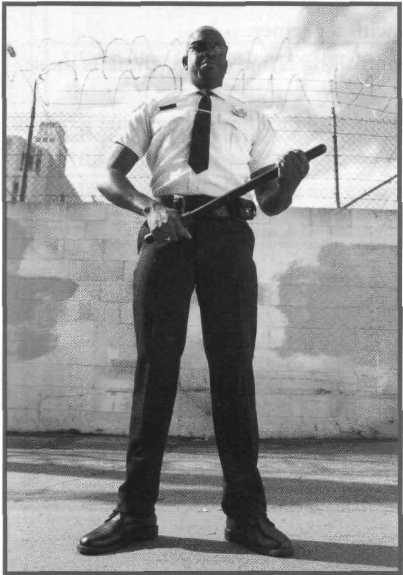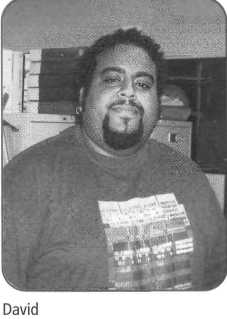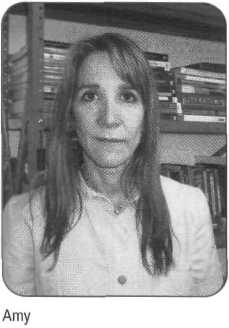b. Find words or word combinations in the text that have the same or a similar meaning to the words given in italics.
a. Solicitors deal with legal matters for their clients, including the writing of documents.
b. While working in established firms of solicitors, they do much of the everyday junior work until they pass all exams.
c. They can only do this after several more years of working together with a senior barrister.
d. For one thing, they tend to come from the upper class of society.
e. They can express their opinion well in public.
f. These things are necessary to protect judges from outside interference.
g. Judges sometimes seem to have different ideas from the majority of people.
h. Their opinions are sometimes very important items in newspapers or on TV.
3. Speaking 5
Work in pairs. Discuss the following questions.
1. What is the main difference between the legal profession in Great Britain and the USA?
There is some additional information which may be of help.
The United States does not draw a distinction between barristers and solicitors; all lawyers who pass the bar examination may argue in the courts of the state in which they are admitted, although some state appellate courts require attorneys to obtain a separate certificate of admission to plead and practice in the appellate court. Federal courts require specific admission to that court's bar in order to practice before it. At the State appellate level and in Federal courts, there is no separate examination process, and admission is usually granted as a matter of course to any licensed attorney.
/from America in Close-up. Eckhard Fielder, Reimer Jansen, Mil Norman-Risch/
|
2. Do you think that a relatively small legal profession, as in Britain, is desirable? Give your reasons.
3. What are the main differences between the legal system in your country and that in Britain?
4. Are there any unpaid 'amateur' legal officers similar to Justices of the Peace?
5. What kind of training do lawyers undergo in your country?
Speaking 6 Role-play “In Court”
1. Imagine you are in court. The following case is being heard.
On the June 22-23 night 2002 a man's body was found at 19/2 Bradley Drive, Olean, NYS, USA. The murdered - James Vane, 42 y.o., was the owner of three "James"' fast-food restaurants. His wife, Eleanor Vane, returned home from her friend's party at 2 a.m. and found her husband's body.
James Vane was lying on the first floor of his house. He was killed with a small heavy iron statue of Adonis between 9 and 11 p.m. The murderer smashed James Vane's head with the statue. Vane's neighbour, Mrs. Smith, saw James entering the house at 7:50 p.m. Some of Mrs. Vane's jewelry, worth about 2'000$ were missing. One of the jewels was found by Alfred Offenbach, Mrs. Vane's good friend, on the loan near the Vanes' house.
James Vane possessed 33.3% of "James' Ltd." shares. His two companions, Henry Wotton and Oscar Fleming, had equal amounts of shares - 33.3% each. Mr. Vane also had 1,322,473$ on his bank accounts and about 200,000$ in bonds. After James Vane's death his companions inherited 16.6% of "James' Ltd." shares each; his wife inherited аll the money on the bank accounts and all the bonds.
The evening before the murder James Vane spent with his companions, Henry Wotton and Oscar Fleming. They were playing pool and drinking beer in the "Amazon" club from 4 until 7:25 p.m. The three waitresses, one 'dancer and a dozen of customers saw them there. At 7:40 Henry Wotton gave James Vane a ride home. At 8:00 Mr. Wotton was home, but nobody can confirm that. His wife Victoria returned home at 10:15 p.m. and his daughter Julia was sleeping and didn't hear her father entering the house. Oscar Fleming spent another 45 minutes in the club and went home to Jamestown, PA, which is 35 miles away from Olean. He lives alone in the forest in a logged cabin with his cat and dog.
The police accused Mrs. Vane of murdering her husband.
|
2. Choose from the list which character you would like to adopt at the trial.
John Marshall - the judge
Ellis Page - the defender
Ronny Riethmiller - the prosecutor
Eleanor Vane - the defendant, James Vane's widow
Henry Wotton - James Vane's friend and companion
Oscar Fleming - James Vane's friend and companion
Victoria Wotton - Henry Wotton's wife
Alfred Offenbach - Eleanor Vane's friend
Laura Patrone - Eleanor Vane's close friend
Kate Wild - a dancer in the nightclub
Candice Rostan - a police officer
Julie Osborn - Alfred Offenbach's former lover
Lee Hubbard - the owner of the antique shop
Your teacher will give you a card with your task.
3. Work together and act out the session.
Unit 4 ‘Controlling Crime’
Listening
1 . Pre-listening task . Pre-listening task
1. Read the following passage.
Violent crime has dropped in the United States in recent years, but the overall crime rate is still alarmingly high. Crime control is one of the most difficult and controversial subjects in sociology. People have very different beliefs about the best way to lower the crime rate.
Many people believe that the best way to control crime is to stop it from happening in the first place. This might mean developing educational and social programmes to discourage young people from becoming involved in criminal activity, or having more police officers on the streets. Other people think that the best way to control crime is to have tougher punishments. This might include having stricter laws, more arrests, and longer prison terms.
2. Answer the following questions according to the information in the passage.
What are two different approaches to controlling crime?
How could educational and social programmes help lower the crime rate?
3. Read these questions and share your answers with a partner. Then discuss as a class which opinions were the most controversial.
Which of the two different approaches to controlling crime do you think is more effective? Why?
Do you think your community has a high crime rate or a low crime rate? Explain.
What is your opinion about controlling crime? Write A (agree) or D (disagree) next to the following opinions.
________ 1 Criminals should be punished. If people break the law, they deserve to pay the price, no matter why they did it.
________ 2 Having tough punishments can stop people from committing crimes. If we have severe punishments, people will think twice before they break the law.
________ 3 People need a second chance. If we try to reform criminals, by education, psychological treatment, or other methods, we can turn them away from a life of crime.
________ 4 We need to provide a sense of security in society. Putting people who break the law in prison is the only way to do that.
________ 5 The most important thing we can do is try to prevent crime before it happens. Prevention is always better than punishment.
2. Listening 1 INTERVIEW WITH DAVID: Preventing juvenile crime
Here are some words and phrases from the interview with David printed in bold and given in the context in which you will hear them. They are followed by definitions.
I think the media exacerbates the problem: makes worse
We have thousands of security guards in the schools and metal detectors, too:
machines that can detect guns, knives, and other weapons made of metal
And the kids get searched as they go into school: physically examined to see if they have weapons or illegal drugs
They are more likely to lash out and become violent: express anger
Put them on a one-to-one basis and they're usually very friendly: with one other person
The problem is that social support systems have really fallen apart: government and private organizations that give people help and encouragement / become worse due to lack of money
The funding for programs like these has been cut: money
But we also need harsher punishments: stronger, more serious
|
 1. Read the following questions before you listen to the interview with David, a young man who works with high school students before they go to college. 1. Read the following questions before you listen to the interview with David, a young man who works with high school students before they go to college.
What does David think causes young people to commit crimes?
How do kids feel about school? Why?
Does David believe that violent kids are products of their social environment, or that they have natural, biological tendencies to be that way?
What kinds of programmes does David think schools should organize?
Does David believe in harsh punishments?
2. Now listen to the interview. Take notes about the answers to the questions in Step 1.
Note-taking: using symbols and abbreviations
When you are taking notes while listening, you have to write down a lot of information very quickly. Instead of writing out each word separately, you should develop the habit of using symbols and abbreviations.
You may want to change some of the symbols and abbreviations below to ones that are easier for you to remember and use. You will probably also want to invent some of your own, depending on the content of the listening text. When you invent symbols and abbreviations, it is important to review your notes as soon as possible after the listening while their meanings are still fresh in your mind.
Symbols
Here are some symbols that are commonly used in English. Many of them come from the field of mathematics.
& (and) ... (and so on, etc.)
@ (at) + (plus, in addition to)
# (number) $ (dollars)
= (is the same as) ≠ (is different from, doesn’t mean)
‹ (is less than) › (is more than)
″ (ditto, as said before, similarly) → (causes, leads to, results in)
% (percent)
♂ (boy, man, male)
♀ (girl, woman, female)
Abbreviations
In addition to using symbols, good note-takers abbreviate long words or words that are frequently used. Here are a few standard abbreviations that are commonly used in English. Notice that some are based on Latin words.
Ex. or e.g. (for example; “e.g.” is from the Latin exempli gratia)
w/ (with)
etc. (and other similar things, from the Latin etcetera)
a.m. (before noon, from the Latin ante meridiem)
p.m. (after noon, from the Latin post meridiem)
gov’t (government)
ed. (education)
Prof. (Professor)
Dr. (Doctor)
usu. (usually)
pro (for, a Latin prefix meaning “in favour of”)
con (against, an abbreviation of the Latin contra)
ben(s) (benefit(s))
opps (opportunities)
diff (different)
|
3. Work with a partner. Take turns telling each other your answers. (You can review your notes first, but don't look at them while you are speaking.) Then share your answers as a class.
3. Listening 2 INTERVIEW WITH AMY: The prison experience
Here are some words and phrases from the interview with Amy printed in bold and given in the context in which you will hear them. They are followed by definitions.
what really works - not for hardened criminals, but for first-time offenders: people who commit a crime for the first time
The first step is deterrence: stopping people from committing crime
Criminals are not being rehabilitated: taught how to have a socially acceptable way of life
You end up having a lot of people in prisons who are not the kingpins of drug deals: most important people
There need to be programs that have a psychological and an educational component: part
We need to make prison a less repressive experience: cruel and severe
We need bridge programs: programs that help released prisoners adjust to society
Most criminals are recidivists: repeat criminals
so that society doesn't look at released prisoners in such a disdainful way: disrespectful, critical
so that no stigma is attached: shame
|

1. Amy does not believe that the current prison system is very effective. She describes the experience of a person before being convicted of a crime, while in prison, and after being released. Listen to the interview with Amy and fill in the chart with the main ideas that she discusses.
|
What Amy thinks should happen
|
The present situation
|
Before a person is convicted of a crime and sent to prison
|
There should be more jobs and more social support systems.
|
The economy and the social structure don’t help prevent crime.
|
While a convicted criminal is in prison
|
|
|
After a person is released from prison
|
|
|
2. Compare your answers with a partner.
4. AFTER THE INTERVIEWS
1. Following is a paraphrase of the interviews with David and Amy. Fill in the blanks using your own words. In some cases, you will need to write more than one word.
David says that the ______________________ and the ______________________
exacerbate the problem of juvenile crime. He believes that kids are essentially ______________________. He thinks they need more ______________________ systems and after-school activities. He also thinks they need good role models. However, he believes that if someone does commit a crime, the punishment should be ______________________, but ______________________.
Amy says that to deter people from committing crime, you have to talk about social factors such as whether there are enough ______________________ for everyone and enough social support systems. But if convicted criminals are sent to jail, we need programs to ______________________ them, such as drug treatment programs and ______________________ programs. Unfortunately, many of the programs that she thinks are needed have been ______________________.
Amy believes that one reason there are so many recidivists is because criminals have a bad experience in jail. When prisoners are released, Amy thinks they need ______________________ to help them go back into society.
2. Compare your answers with a partner. Remember that your answers will probably not be exactly the same.
Speaking 1 Supporting your opinion
1. In the interviews, both David and Amy support their viewpoints. Look at the summaries of their arguments below. For each summary, underline the main idea, circle each piece of supporting information, and highlight linking words.
David believes that in order to control juvenile crime, we should try to prevent it from happening. He says that to begin with, we should have more structured after-school activities for young people. We should also have Big Brother/Big Sister programs. Additionally, we need better social support systems. And, finally, we should have harsher punishments for crimes because these would act as deterrents.
Amy believes that it is important to try to deter potential criminals from committing crimes. But her main point is that we should have rehabilitation procedures for criminals. First of all, there should be more programs to rehabilitate convicted criminals when they are in prison. Furthermore, these programs should have a psychological as well as an educational component. Last but not least, there should be bridge programs to help released criminals enter productive, crime-free lives.
|
 Скачать 3.57 Mb.
Скачать 3.57 Mb. . Pre-listening task
. Pre-listening task 1. Read the following questions before you listen to the interview with David, a young man who works with high school students before they go to college.
1. Read the following questions before you listen to the interview with David, a young man who works with high school students before they go to college.
